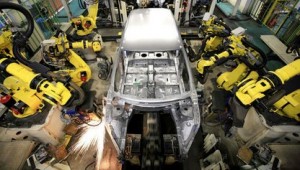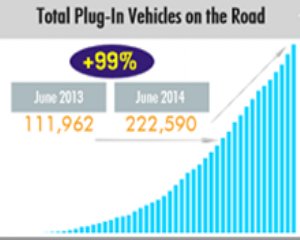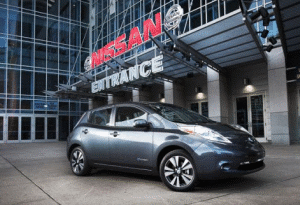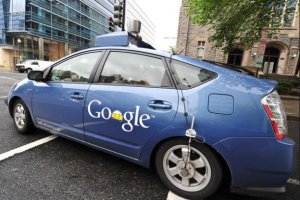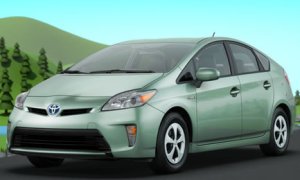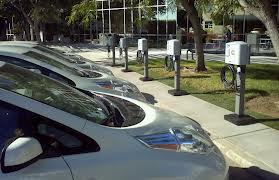by Jon LeSage, editor and publisher, Green Auto Market
 Here’s my take on the 10 most significant and interesting occurrences during the past week…….
Here’s my take on the 10 most significant and interesting occurrences during the past week…….
- The US Department of Energy is now offering $4.5 million more in funding for alternative fuel vehicles through Clean Cities. The goal is to increase consumer outreach, training, and strategic planning; technologies and fuels include plug-in electric, natural gas, propane autogas, and flex-fuel vehicles. Concept papers to apply for funding are due the beginning of next month, Aug. 1, 2014. Areas of focus are on-the-road demonstrations, safety-related training, and emergency preparedness. Read more about the announcement and find the link to apply for funding here.
- A long-awaited announcement came out last week on a more price-competitive model from Tesla Motors. Starting in 2017, Tesla’s Model III car will be introduced with a starting price of $35,000. That model will follow the upcoming Model X crossover and is thought to compete directly with the BMW 3 Series. It will be the first time Tesla enters the market somewhere between the Chevy Volt and Nissan Leaf in starting prices. Tesla CEO Elon Musk said it will get 200 miles on a full charge, and will be about the same size as the BMW 3 Series.
- The US Environmental Protection Agency may be rethinking fuel economy ratings. Automakers may have to road test their vehicles to verify mileage claims posted on window stickers, according to a proposal being considered by the EPA. The EPA is requesting more accurate information in the wake of Ford, Hyundai, and Kia overstating fuel efficiency on some of its models. “Some automakers already do this, but we are establishing a regulatory requirement for all automakers,” Chris Grundler, director of the EPA’s Office of Transportation and Air Quality, told The Wall Street Journal.
- Google Earth Outreach is working with Environmental Defense Fund to map out natural gas leaks under the streets of Boston, Indianapolis, and New York City’s Staten Island. Google is providing cars and drivers traveling streets to measure leaking natural gas, which is mostly methane, through its Google Street View mapping; along with sensing and analytical technologies to measure environmental indicators. Two years ago, the California Air Resources Board launched a mapping tool using Google Earth that allows users to locate major sources of greenhouse gases and examine the emissions of each facility. Along with Street View and driverless car technology, another recent move by Google was a $500 million acquisition of Skybox Imaging in June. Skybox Imaging provides commercial high-resolution satellite imagery, high-definition video, and analytics services. It will be interesting to see where Google is going with telematics, mapping, and autonomous vehicle technologies.
- Level 2 charging will grow 14-fold by 2020, says research by GlobalData. The market could grow from $67 million in revenue this year to $947 million by 2020. The American Recovery and Reinvestment Act has provided attractive incentives for electric vehicle (EV) charging stations installations, according to the study.
- LG Chem is working on second-generation batteries for electric vehicles that can travel more than 200 miles per charge when it comes out in 2016. The battery maker, based in South Korea, currently supplies batteries for General Motors, Renault SA, and other automakers.
- The Government Car Service in the UK is considering a few Tesla Model S deliveries to transport officials. The government has dedicated 5 million pounds ($8.6 million) for the program designed to buy more than 150 ultra-low emission vehicles.
- Volvo is setting up a global partnership with ABB to co-develop and commercialize electric and hybrid buses along with fast charging systems. Their first project will be the implementation of Volvo electric hybrid buses and ABB’s automatic e-bus chargers in the Luxembourg public transport system; 12 Volvo Electric Hybrid buses will be running on existing lines by 2015.
- Tesla Motors offered a $10,000 prize at a hackers conference for any one of them that could hack into a Model S. Chinese hackers at the SyScan360 conference in Beijing say they’ve found a vulnerable entry point. A post on the social network Weibo said that the IT department from Chinese company Qihoo 360 Technology Co had been able to take control of the car’s door locks, horn, headlights and sunroof. Tesla Motors has promised to fix any “legitimate vulnerability” to the Model S.
- Student Transportation Inc.’s 435 school buses operating in Nebraska’s Millard and Omaha public school district were able to gain cost saving of $5,000 per day switching over to propane autogas. That data comes from a one-year test program. The buses travel between 100 to 150 miles per day for an average of about 50,000 miles each year, as was learned during the one-year test program; that equates to about 4.2 million fewer pounds of carbon dioxide being released after switching over to propane.


